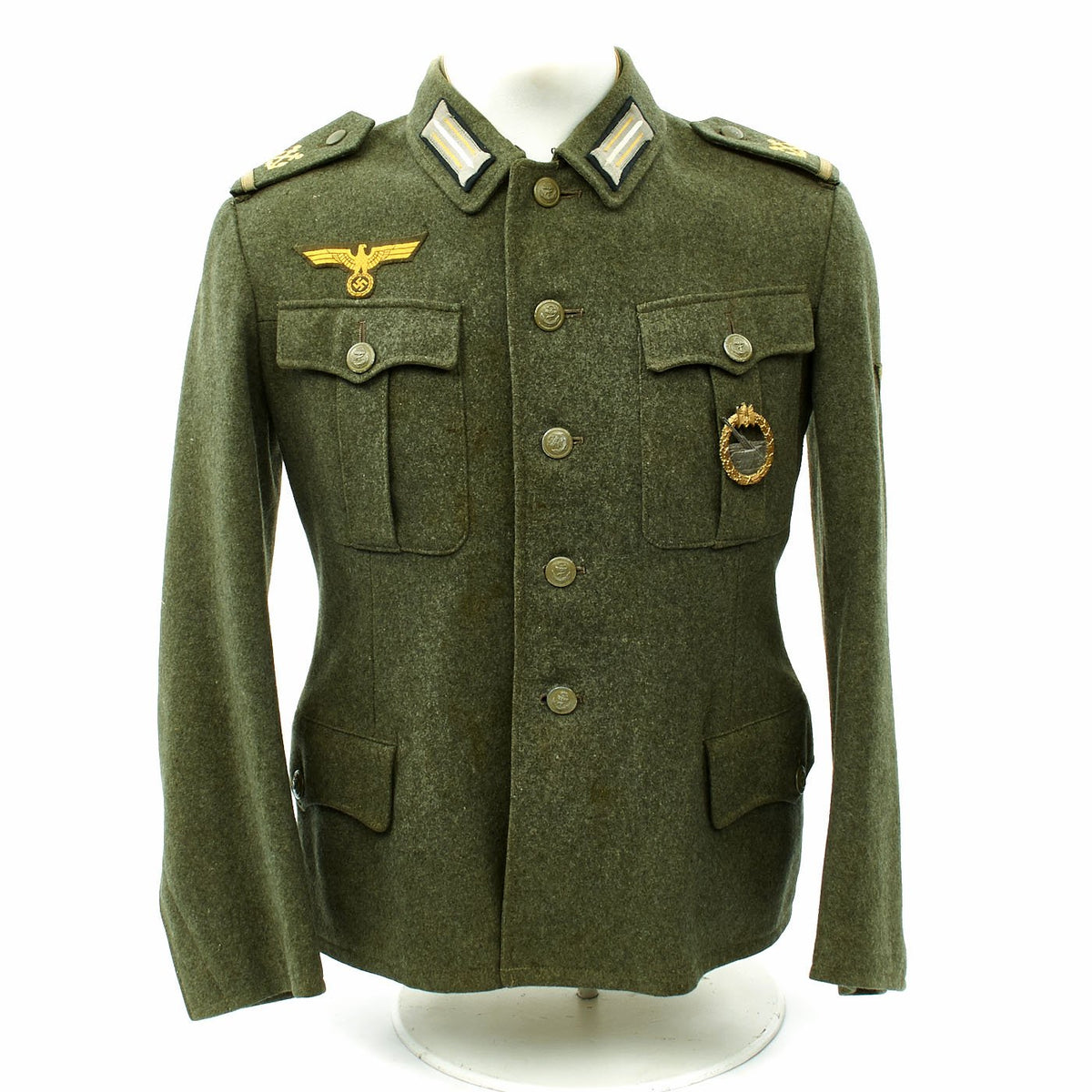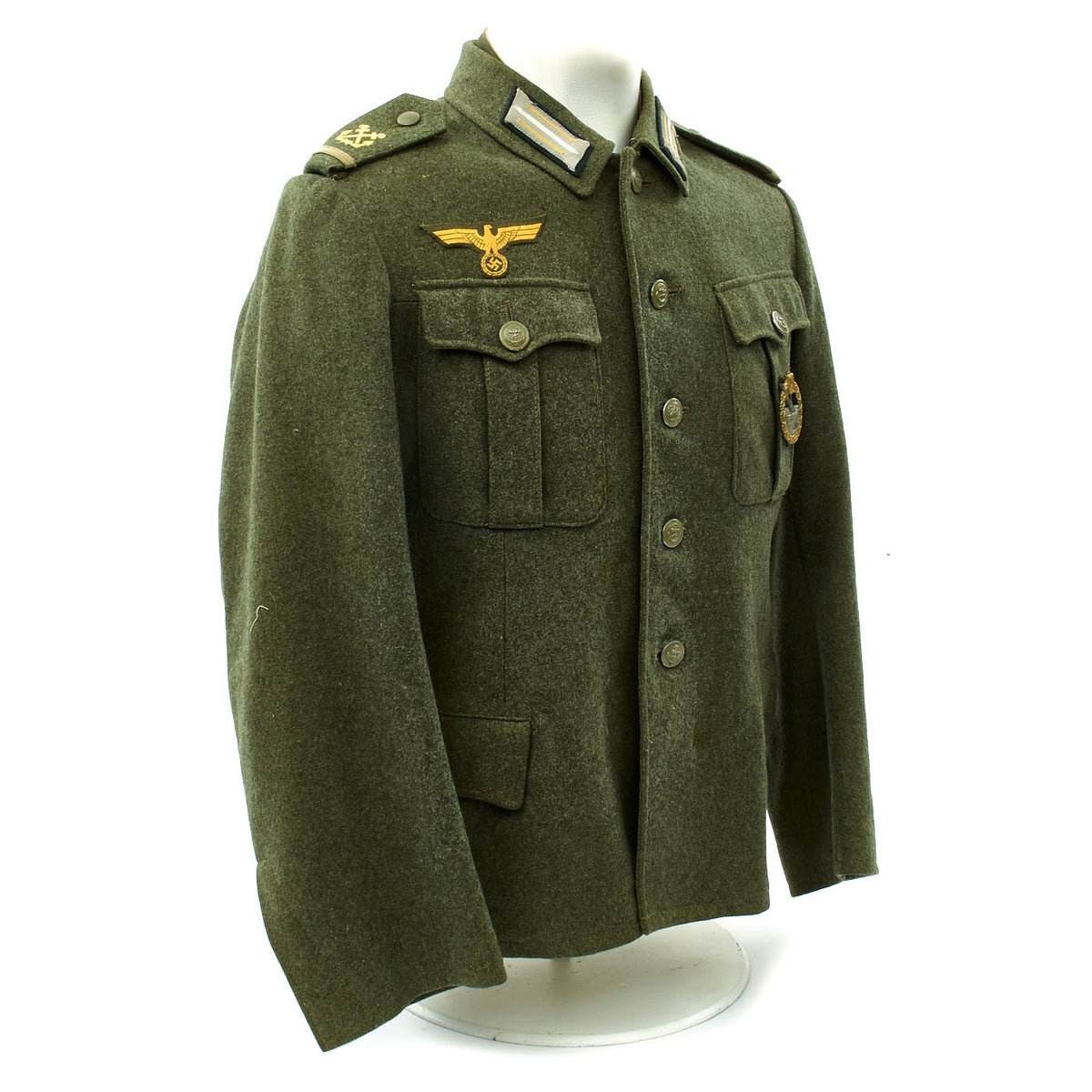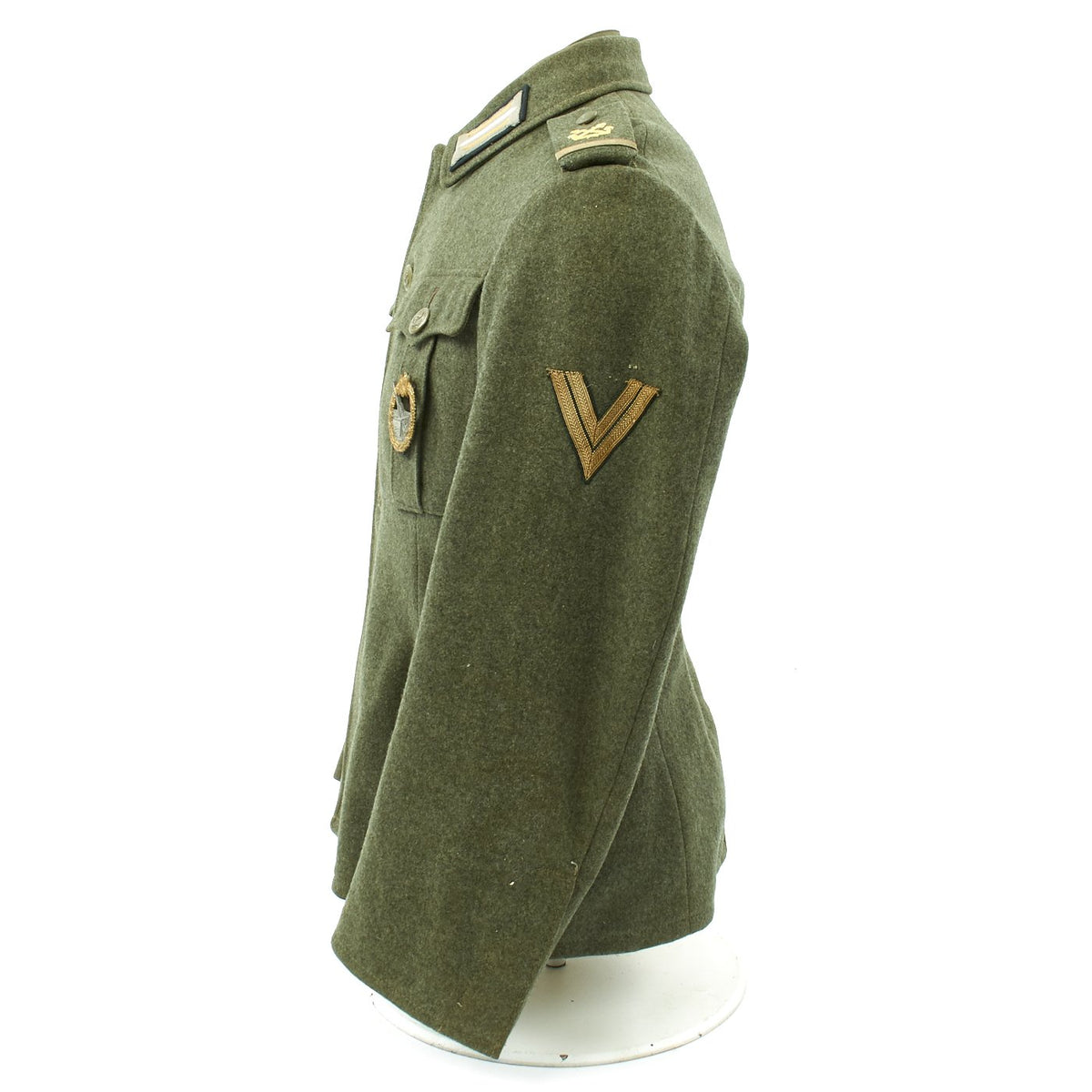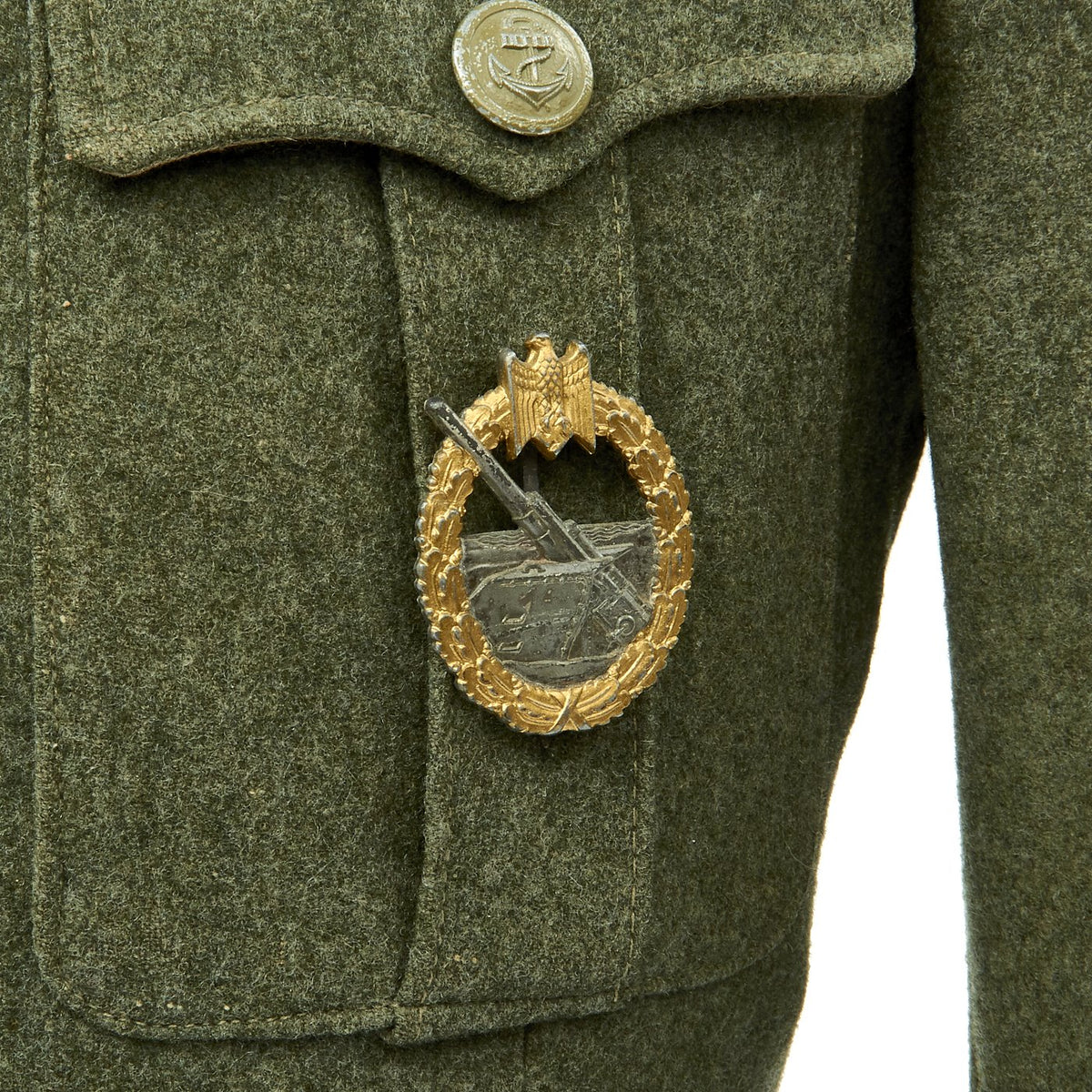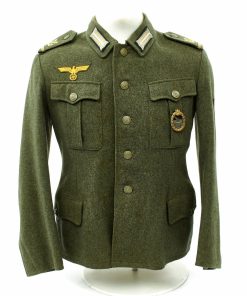Original German WWII Kriegsmarine Coastal Artillery Matrosenobergefreiter Tunic with Badge Original Items
$ 1.395,00 $ 348,75
Original Item: Only One Available. This is an excellent example of a WW2 German Army Kriegsmarine Coastal Artillery Matrosenobergefreiter (Seaman 2nd Class) tunic. This beautiful tunic is nearly untouched. The tunic itself is made of a medium weight field gray/green wool. The front closes with five green painted Kriegsmarine Navy Anchor painted buttons. The attractive Naval breast eagle stitched to the chest in a fashion typical of wartime German tailor work. The collar tabs are correct for the rank and machine applied. The shoulder boards have embroidered crossed anchor and are neatly and tightly applied. Chevron on left shoulder is machine stitched and in excellent condition.
The exterior of this tunic is clean, retaining virtually all of the original wool nap, and showing no staining or fading. The cuffs feature hidden closure buttons. There are medal loops with an Original German WWII Kriegsmarine Coastal Artillery Badge by Funke & Brüninghaus, Lüdenscheid. This is a very nice example constructed of Zinc with exterior gilt wash on the surround, marked on the reverse L/56.
The inside of this Navy tunic is fully lined with cotton, as is typical. The interior of the M36 style dark green badge cloth collar has button for affixing a collar bind which is also included. Hidden belt hooks are also present. There are ink maker stamps on the interior that read: Fritz Schmitz & Co. PFORZHEIM 39 42 96 65 59.
Overall a fantastic condition Coastal Artillery Kriegs Marine Uniform tunic with an original badge that just by itself costs well over $400.
The Naval Artillery War Badge or War Badge for the Coastal Artillery (German: Kriegsabzeichen für die Marineartillerie) was a World War II German military decoration awarded to the crews of Kriegsmarine land-based marine artillery and anti-aircraft units. It was presented to personnel of coastal defense units, and anti-aircraft units. The award was instituted on 24 June 1941 by Grand Admiral Erich Raeder to reward the actions of both individuals and crew members. It was also awarded to those killed in action in said units.
The medal was designed by Otto Placzek of Berlin. It consists of an outer laurel wreath of oak leaves with the German Eagle at the top, displaying “down-swept” wings while clutching a swas (both gold in color). The central area featured a coastal artillery gun with the sea behind (in grey color). The early war version were made of bronze and later nickel.Inferior quality late-war versions were made of “pot or monkey metal”. The medal was worn on the lower part of the left breast pocket of the naval service tunic.
Criteria for award
A crew could receive the award by achieving eight points:
– Two for downing an aircraft unassisted
– One for downing an aircraft assisted by another crew
– half a point for non-gun crew members, operating a searchlight, fire control, sound
locator or radio operator for aiding in the downing of aircraft
The badge was issued in a single degree only.
Fast Shipping with Professional Packaging
Thanks to our longstanding association with UPS FedEx DHL, and other major international carriers, we are able to provide a range of shipping options. Our warehouse staff is expertly trained and will wrap your products according to our exact and precise specifications. Prior to shipping, your goods will be thoroughly examined and securely secured. We ship to thousands clients each day across multiple countries. This shows how we're dedicated to be the largest retailer on the internet. Warehouses and distribution centres can be located throughout Europe as well as the USA.
Note: Orders with more than one item will be assigned a processing date depending on the item.
Before shipping before shipping, we'll conduct a thorough inspection of the items you have ordered. Today, the majority of orders will be delivered within 48 hours. The delivery time will be between 3-7 days.
Returns
The stock is dynamic and we cannot completely manage it because multiple stakeholders are involved, including our factory and warehouse. So the actual stock may alter at any time. It's possible that you may not receive your order once the order has been made.
Our policy is valid for a period of 30 days. If you don't receive the product within 30 days, we are not able to issue a refund or an exchange.
You can only return an item if it is unused and in the same state as the day you received it. You must have the item in its original packaging.
Related products
Uncategorized
Uncategorized
Uncategorized
Uncategorized
Uncategorized
Armored Burgonet Helmet & Polearm from Scottish Castle Leith Hall Circa 1700 Original Items
Uncategorized
Uncategorized
Uncategorized
Uncategorized
Uncategorized
Uncategorized
Angolan Rebel 1970s era 60mm Inert Display Mortar from Angolan Civil War Original Items
Uncategorized
Australian WWII Owen MK1 Machine Carbine SMG Custom Fabricated Replica with Sling Original Items
Uncategorized
Armoured Fighting Vehicles of the World: AFVs of World War One (Hardcover Book) New Made Items
Uncategorized
Uncategorized
Uncategorized
Band of Brothers ORIGINAL GERMAN WWII Le. F.H. 18 10.5cm ARTILLERY PIECE Original Items
Uncategorized
Uncategorized
